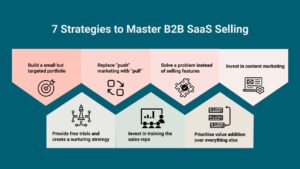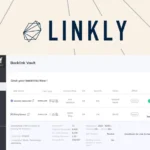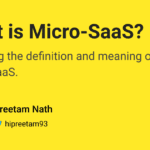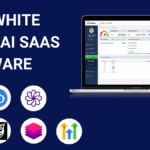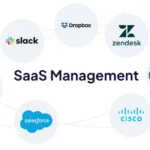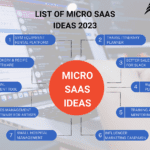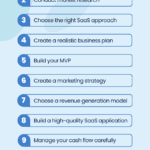B2B SaaS marketing strategies focus on targeted content marketing and leveraging data analytics to drive lead generation and customer retention. Effective B2B SaaS marketing requires a deep understanding of your target audience and their specific needs.
By creating tailored content that addresses pain points, you can establish authority and build trust. Utilize data analytics to track user behavior and optimize campaigns for better performance. Email marketing and social media platforms are crucial for nurturing leads and engaging with potential clients.
Offering free trials or demos can also help convert prospects into paying customers. Consistent performance monitoring and adaptability ensure your strategies stay relevant and effective in a dynamic market.
Introduction To B2b Saas Marketing
B2B SaaS marketing involves promoting software as a service to other businesses. This niche is dynamic and requires a tailored approach. Understanding the key principles is essential for success.
The Rise Of Saas Solutions
SaaS solutions have grown significantly in the business world. They offer flexibility and scalability. Many companies prefer SaaS because it reduces upfront costs. SaaS also provides regular updates and support.
Here are some reasons for the rise of SaaS:
- Cost Efficiency: Lower initial investment and maintenance costs.
- Scalability: Easily adjust to business needs.
- Accessibility: Access from anywhere with an internet connection.
- Automatic Updates: Regular updates without extra charges.
Key Principles Of B2b Marketing
B2B marketing differs from B2C marketing in several ways. Understanding these key principles is crucial for success.
| Principle | Description |
|---|---|
| Target Audience | Focus on businesses rather than individual consumers. |
| Long Sales Cycles | Expect extended decision-making processes. |
| Relationship Building | Establish trust and long-term relationships. |
| Content Marketing | Provide valuable information to educate potential clients. |
| Account-Based Marketing | Customize marketing efforts for specific accounts. |
Effective B2B SaaS marketing strategies incorporate these principles. They help in attracting and retaining clients.
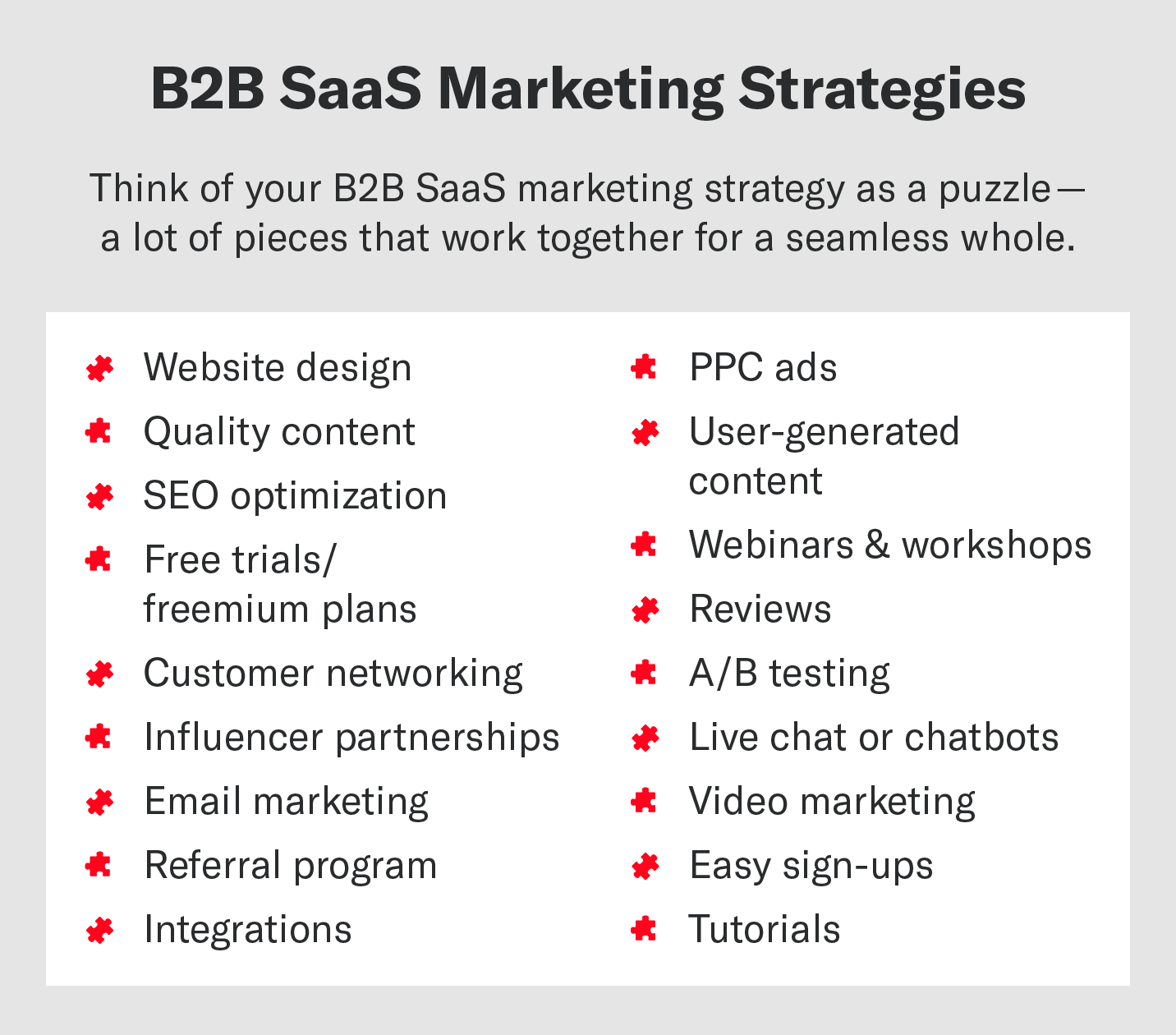
Credit: www.siegemedia.com
Identifying Your Target Audience
Identifying your target audience is crucial for successful B2B SaaS marketing. Knowing who your customers are ensures your marketing efforts reach the right people. This step helps you create relevant content and effective campaigns. Let's dive into the key components of identifying your target audience.
Creating Buyer Personas
Buyer personas are detailed descriptions of your ideal customers. They help you understand the needs and pain points of your audience. Here is how you can create effective buyer personas:
- Research: Gather data from current customers, surveys, and market analysis.
- Identify Patterns: Look for common traits among your best customers.
- Develop Profiles: Create profiles that include demographics, job roles, and challenges.
- Update Regularly: Keep your personas up-to-date with new information.
Use this information to tailor your marketing messages. This ensures they resonate with your target audience.
Market Segmentation Techniques
Market segmentation divides your audience into smaller groups. This technique helps you target specific segments more effectively. Here are some common market segmentation techniques:
- Demographic Segmentation: Based on age, gender, income, and education.
- Geographic Segmentation: Based on location, such as country, city, or region.
- Firmographic Segmentation: Based on company size, industry, and revenue.
- Behavioral Segmentation: Based on user behavior, purchase history, and usage patterns.
Segmenting your market allows you to create tailored marketing strategies. This results in higher engagement and conversion rates.
Using Data To Refine Your Audience
Utilize data analytics to refine your target audience. Tools like Google Analytics and CRM software provide valuable insights. Track metrics such as:
- Website traffic sources
- User behavior and interaction
- Conversion rates
- Customer feedback
Analyze this data to identify trends and patterns. Adjust your marketing strategies based on these insights. This helps you reach the most relevant audience effectively.
Content Marketing Mastery
Mastering content marketing is crucial for B2B SaaS companies. It builds trust, generates leads, and nurtures customer relationships. Effective content marketing strategies can set your SaaS business apart from competitors. Let's dive into some proven techniques.
Crafting Valuable Content
Creating valuable content is the cornerstone of content marketing. Your audience seeks information, not just sales pitches. Here are some tips to craft content that resonates:
- Understand your audience: Know their pain points and needs.
- Create educational content: Offer solutions through blogs, eBooks, and webinars.
- Use case studies: Showcase real-life success stories.
- Offer free tools: Provide calculators or templates.
Quality content establishes your brand as an authority. This builds trust and drives engagement.
Leveraging Seo For Visibility
SEO ensures your content reaches the right audience. It's about optimizing for search engines and users alike. Here are essential SEO strategies:
- Keyword research: Identify terms your audience searches for.
- On-page SEO: Optimize titles, meta descriptions, and headers.
- Internal linking: Link to related content within your site.
- External backlinks: Earn links from reputable sites.
SEO boosts organic traffic and enhances visibility. High-ranking content attracts potential customers.
Leveraging Social Media
Social media has transformed B2B SaaS marketing. It connects businesses with decision-makers. With the right approach, it boosts engagement and builds brand authority. Let's explore effective social media strategies.
Choosing The Right Platforms
Choosing the right social media platforms is crucial. Each platform serves a different audience. Consider your target market's preferences.
- LinkedIn: Ideal for B2B marketing. It's a professional network with numerous decision-makers.
- Twitter: Great for quick updates and industry news. It helps in engaging with influencers.
- Facebook: Useful for community building and sharing detailed content.
- Instagram: Perfect for visual content. It works well for brand storytelling.
Building Engagement
Engagement is the heart of successful social media marketing. Here are strategies to build it:
- Content Quality: Share valuable and relevant content. It should address your audience's needs.
- Interactive Posts: Use polls, quizzes, and questions. They encourage audience interaction.
- Consistent Posting: Maintain a regular posting schedule. It keeps your audience engaged.
- Respond Promptly: Engage with comments and messages. Quick responses build trust.
- Visual Content: Use images, infographics, and videos. Visuals capture attention.
Here's a quick comparison of the features and benefits of each platform:
| Platform | Key Features | Benefits |
|---|---|---|
| Professional Networking | Connects with decision-makers | |
| Real-time updates | Engage with influencers | |
| Community Building | Share detailed content | |
| Visual Storytelling | Engages with visual content |
Email Marketing Strategies
Email marketing is a powerful tool for B2B SaaS companies. It can drive engagement, nurture leads, and ultimately convert prospects into loyal customers. Crafting an effective email marketing strategy requires a deep understanding of your audience and a targeted approach.
Segmentation And Personalization
Segmentation and personalization are crucial for email marketing success. By dividing your email list into smaller segments, you can tailor your messages to meet the specific needs and interests of each group. This approach increases engagement and conversion rates.
Here are some ways to segment your email list:
- Industry: Tailor content to address specific industry challenges.
- Company Size: Offer solutions that fit the scale of their operations.
- Job Role: Provide information relevant to their responsibilities.
- Behavioral Data: Use past interactions to predict future needs.
Personalization goes beyond addressing recipients by their names. It involves creating content that resonates with their individual pain points and interests. Consider the following personalization techniques:
- Dynamic Content: Change email content based on user data.
- Personalized Offers: Provide special deals based on user behavior.
- Triggered Emails: Send emails based on specific actions taken by users.
Writing Effective Sales Emails
Writing effective sales emails is an art. It requires clear, compelling messaging that encourages recipients to take action. The goal is to grab their attention and communicate value quickly.
Here are some tips for writing effective sales emails:
| Tip | Description |
|---|---|
| Clear Subject Line: | Make it concise and relevant to the email content. |
| Personalization: | Address the recipient by name and reference their company. |
| Value Proposition: | Clearly state the benefit of your product or service. |
| Call to Action: | Include a clear and compelling call to action. |
| Follow-Up: | Send a follow-up email if there is no response. |
By focusing on these strategies, you can create effective email campaigns that drive engagement and conversions.
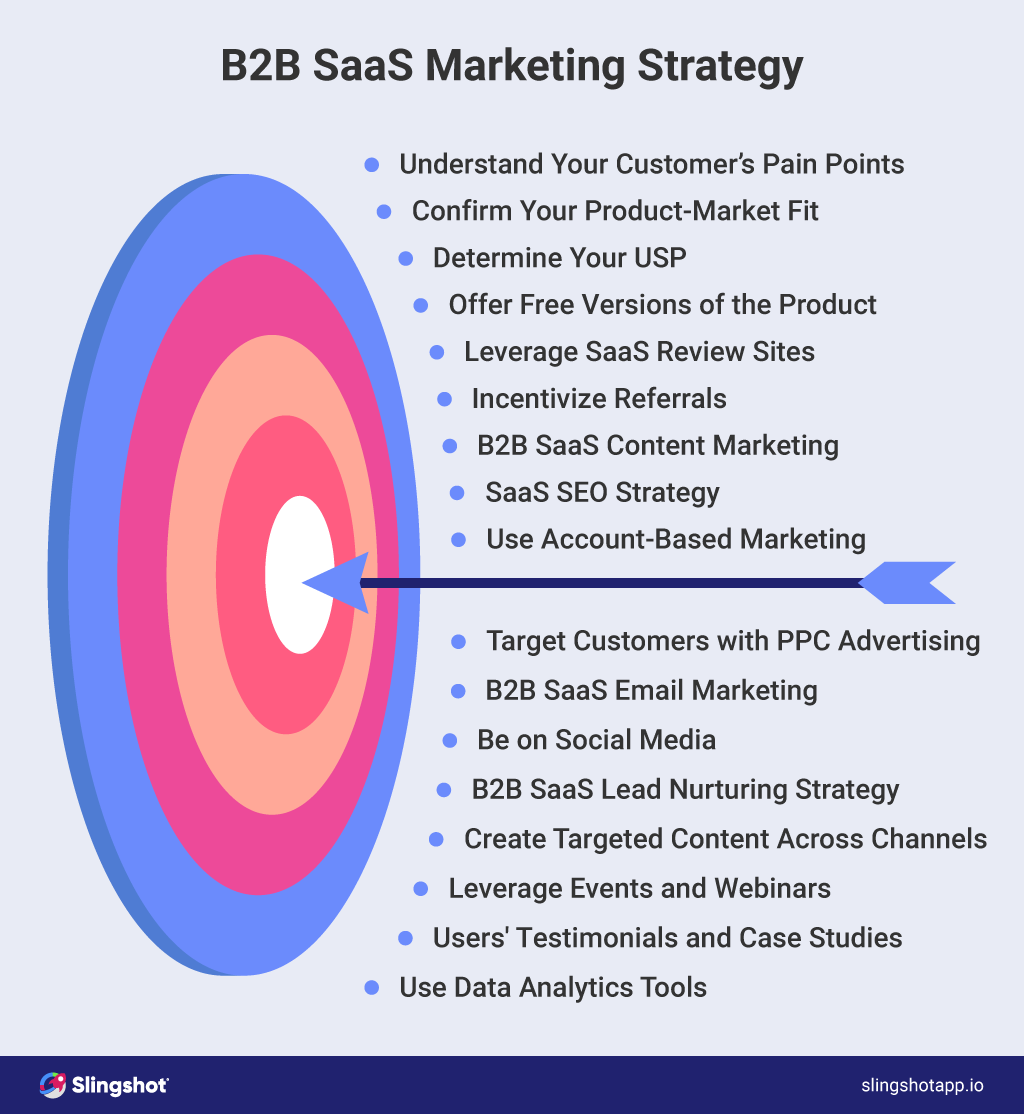
Credit: www.slingshotapp.io
Sales Funnel Optimization
B2B SaaS marketing thrives on an optimized sales funnel. This process guides potential customers from awareness to purchase. It's essential to understand the buyer journey and improve conversion rates. Let's explore key strategies for optimizing your sales funnel.
Understanding Buyer Journey
Understanding the buyer journey is crucial for effective sales funnel optimization. The buyer journey typically has three stages:
- Awareness: The buyer identifies a problem or need.
- Consideration: The buyer researches and evaluates solutions.
- Decision: The buyer chooses a solution and makes a purchase.
Tailor your content to each stage of the journey. For example, use blog posts and social media for the awareness stage. Provide whitepapers, case studies, and webinars during the consideration stage. Offer free trials or demos in the decision stage.
Conversion Rate Improvement
Improving conversion rates is vital for maximizing your sales funnel efficiency. Here are some strategies to boost conversions:
- Personalized Content: Create content that addresses specific buyer needs and pain points.
- Clear Call-to-Actions (CTAs): Use strong and clear CTAs to guide buyers to the next step.
- Landing Page Optimization: Optimize landing pages for speed and user experience.
- Lead Nurturing: Use email marketing to nurture leads through the funnel.
- Social Proof: Include testimonials, reviews, and case studies to build trust.
Track and analyze your conversion rates regularly. Use tools like Google Analytics to identify bottlenecks and areas for improvement.
Performance Analytics And Kpis
In B2B SaaS marketing, tracking performance is crucial. Performance analytics and KPIs help measure success. These metrics guide decision-making and strategy refinement. Let's delve into essential metrics and how data refines strategies.
Essential Metrics To Track
Tracking the right metrics is vital. Here are some essential metrics:
- Customer Acquisition Cost (CAC): The cost to acquire a new customer.
- Customer Lifetime Value (CLV): The total revenue from a customer.
- Churn Rate: The percentage of customers who leave.
- Monthly Recurring Revenue (MRR): The predictable monthly revenue.
- Net Promoter Score (NPS): Measures customer satisfaction.
| Metric | Description |
|---|---|
| CAC | The cost to acquire a new customer |
| CLV | Total revenue from a customer |
| Churn Rate | Percentage of customers who leave |
| MRR | Predictable monthly revenue |
| NPS | Measures customer satisfaction |
Using Data For Strategy Refinement
Data helps refine marketing strategies. Analyzing metrics can reveal strengths and weaknesses.
- Identify Trends: Look for patterns in customer behavior.
- Optimize Campaigns: Adjust campaigns based on performance data.
- Improve Customer Retention: Use data to understand churn reasons.
- Enhance User Experience: Tailor experiences using customer feedback.
Refining strategies boosts overall marketing effectiveness. Use data to stay ahead in the competitive B2B SaaS market.
Customer Retention Techniques
In the competitive world of B2B SaaS, customer retention is crucial. Acquiring new customers is important, but keeping existing ones is even more valuable. Retention ensures a steady revenue stream and builds brand loyalty. Let's explore some effective customer retention techniques.
Implementing Feedback Loops
Feedback loops are essential for understanding customer needs and improving services. Regularly ask for feedback through surveys, emails, or direct calls. Use the insights to enhance your product.
Steps to Implement Feedback Loops:
- Send out customer surveys periodically.
- Analyze the feedback data.
- Make necessary product adjustments.
- Inform customers about the changes made.
A feedback loop shows customers that their opinions matter. This builds trust and encourages loyalty.
Upselling And Cross-selling Strategies
Upselling and cross-selling are powerful techniques to increase revenue and enhance customer satisfaction. Offer additional features or related products that add value to the customer's experience.
Effective Upselling Tactics:
- Highlight premium features that solve specific problems.
- Offer discounts on upgrades.
- Provide free trials for advanced features.
Effective Cross-Selling Tactics:
- Suggest complementary products or services.
- Bundle related products at a discount.
- Use personalized recommendations based on customer behavior.
Implementing these strategies can significantly boost customer lifetime value. It also enhances the overall user experience.
Leveraging Customer Testimonials
B2B SaaS marketing thrives on trust and credibility. One of the most powerful ways to build both is through leveraging customer testimonials. Testimonials offer genuine insights and experiences from real users, making them compelling for prospects. They validate your product's effectiveness and create a sense of reliability. Let's explore effective strategies for leveraging customer testimonials.
Showcasing Success Stories
Highlighting success stories can greatly influence your audience. These stories provide detailed examples of how your product solved specific problems. Create a dedicated section on your website for these stories. Include both written and video testimonials for maximum impact.
Here’s a simple structure for showcasing success stories:
| Customer Name | Problem | Solution | Result |
|---|---|---|---|
| Company A | Low productivity | Your SaaS Tool | 30% increase in efficiency |
| Company B | High churn rate | Your SaaS Tool | 20% customer retention boost |
Building Trust With Prospects
Trust is the cornerstone of B2B relationships. Testimonials help build this trust by providing social proof. Prospects are more likely to believe in your product if they see others benefiting from it.
Use customer testimonials across different platforms:
- Website: Add testimonials to your homepage, product pages, and landing pages.
- Email Campaigns: Include snippets of testimonials in your email newsletters.
- Social Media: Share video testimonials and quotes on LinkedIn, Twitter, and Facebook.
Consider creating a rotating testimonial widget on your homepage. This ensures visitors see varied positive feedback every time they visit.
By leveraging customer testimonials, you turn satisfied customers into powerful advocates for your brand. This strategy not only builds trust but also drives conversions.
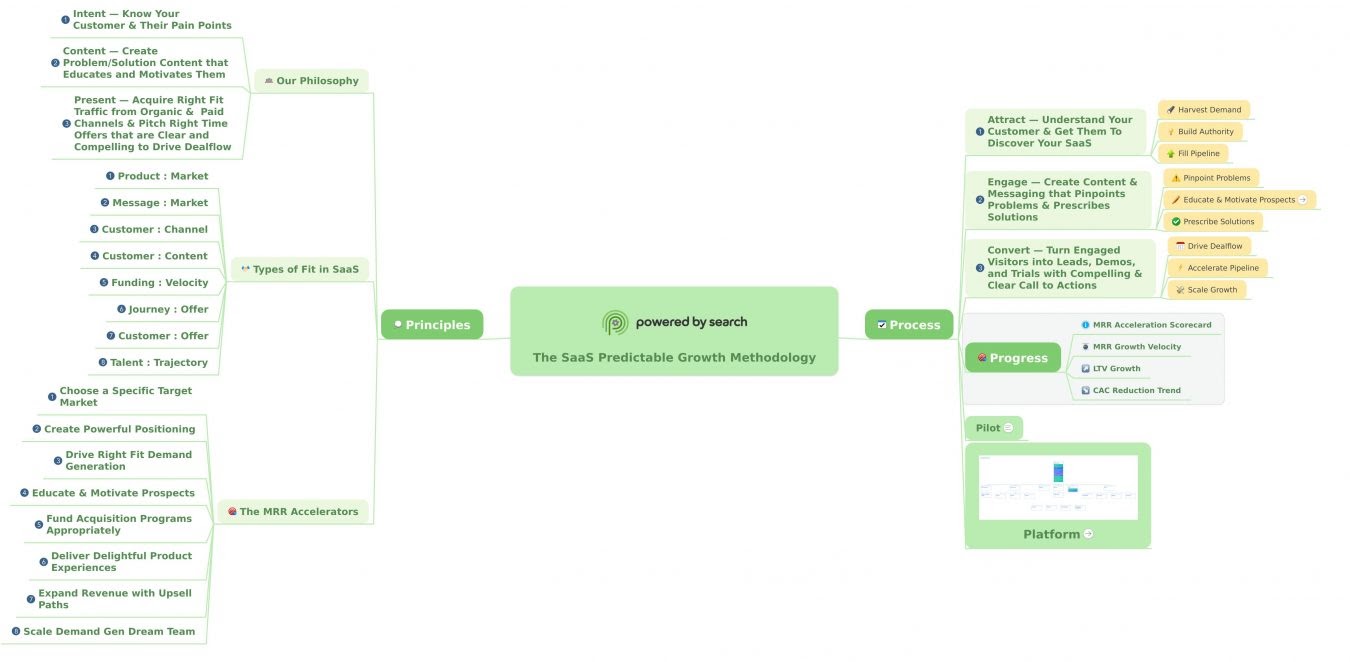
Credit: www.poweredbysearch.com
Partnerships And Collaborations
Partnerships and collaborations hold immense potential in B2B SaaS marketing. By partnering with other businesses, you can expand your reach and tap into new markets. Collaboration helps leverage mutual strengths, ensuring both parties benefit. This approach can significantly boost your brand's visibility and credibility.
Establishing Strategic Alliances
Building strategic alliances can be a game-changer for your SaaS business. Identify companies with complementary products or services. This ensures both parties bring value to the table. For instance, a CRM software company might partner with an email marketing tool. Both tools cater to the same audience but offer different functionalities.
To establish these alliances, start by reaching out to potential partners. Highlight the mutual benefits and how the partnership can enhance both businesses. A well-planned partnership can lead to shared resources, co-development of products, and joint marketing efforts.
Co-marketing Opportunities
Co-marketing involves joint promotional efforts with your partners. This can include co-branded content, webinars, and events. By pooling resources, you can create high-quality content that attracts a larger audience.
Here are some co-marketing strategies:
- Co-host webinars: Share insights and expertise with a combined audience.
- Joint blog posts: Publish content that highlights both brands' strengths.
- Collaborative eBooks: Offer valuable information while showcasing both brands.
- Shared social media campaigns: Amplify reach by promoting content together.
Co-marketing not only saves costs but also enhances brand trust. Customers see the collaboration as a sign of reliability and expertise.
Here's a table showcasing potential benefits of partnerships and collaborations:
| Benefit | Explanation |
|---|---|
| Increased Reach | Access to a wider audience through partner networks. |
| Shared Resources | Pool marketing budgets for more impactful campaigns. |
| Enhanced Credibility | Partnerships signal trust and reliability to customers. |
| Mutual Growth | Both businesses benefit from shared success and insights. |
Innovative Pricing Models
In the competitive world of B2B SaaS, pricing can make or break your business. Innovative pricing models attract more customers and retain them. It's essential to experiment with various pricing strategies to find the perfect fit.
Flexible Pricing Strategies
Flexible pricing models cater to different customer needs and budgets. This approach includes various options:
- Tiered Pricing: Different packages at varying price points.
- Per-User Pricing: Charges based on the number of users.
- Usage-Based Pricing: Costs depend on the amount of usage.
Tiered pricing offers multiple packages. Each tier provides more features. This approach works well for businesses of different sizes.
Per-user pricing is straightforward. It scales with the growth of the client’s team. This model suits businesses that expand over time.
Usage-based pricing aligns costs with actual usage. It’s fair and transparent. Clients pay only for what they use.
Psychology Of Pricing
The psychology of pricing is crucial in influencing buying decisions. Pricing strategies can leverage psychological triggers to drive sales:
- Charm Pricing: Prices ending in .99 or .95 feel lower.
- Decoy Effect: Introducing a third option to make one look better.
- Anchoring: Showing a high price first to make others look affordable.
Charm pricing makes prices seem more attractive. A price of $9.99 feels less than $10.00.
The decoy effect involves a third option. This makes one option look more appealing. For example, Small, Medium, and Large packages. The medium package looks best when the large is too pricey.
Anchoring shows a high initial price. It makes lower prices appear more reasonable. For example, displaying a $200 package before a $100 package.
Understanding these strategies can significantly impact your pricing success. Use these tactics wisely to attract and retain more customers.
Adapting To Market Changes
In the fast-paced world of B2B SaaS, adapting to market changes is crucial. Companies must remain flexible to stay competitive. This section covers vital strategies to keep your business ahead.
Staying Ahead Of Industry Trends
Keeping up with industry trends is essential for B2B SaaS success. Use analytics tools to monitor market shifts. Subscribe to industry newsletters and join relevant forums. Attend webinars and conferences to gain insights.
Create a dedicated team to track trends. This team should analyze data and provide actionable recommendations. Encourage employees to share their knowledge and insights.
Regularly review and update your marketing strategy. Align it with the latest trends. This ensures your company remains relevant and competitive.
Agility In Marketing Approaches
Agility in marketing approaches allows quick adaptation. Use A/B testing to identify effective strategies. Focus on customer feedback to refine your tactics.
Implement agile project management methods. This helps in quickly responding to market changes. Use tools like Trello or Asana to manage tasks and projects efficiently.
| Traditional Marketing | Agile Marketing |
|---|---|
| Long planning cycles | Short planning sprints |
| Fixed strategies | Flexible strategies |
| Infrequent updates | Regular updates |
Encourage collaboration within your team. Share insights and feedback regularly. This promotes a culture of continuous improvement.
Adopt a mindset of learning and adapting. This keeps your marketing strategies fresh and effective.
Frequently Asked Questions
How Do I Market My B2b Saas?
Market your B2B SaaS by leveraging content marketing, targeted ads, SEO, social media, and email campaigns. Build partnerships and gather testimonials.
What Are B2b Marketing Strategies?
B2B marketing strategies include content marketing, email campaigns, social media engagement, SEO, and networking events. These methods build brand awareness, generate leads, and foster business relationships. Effective strategies focus on understanding target audiences and providing valuable information to solve their problems.
What Is B2b Saas Content Marketing?
B2B SaaS content marketing involves creating and sharing valuable content to attract and engage business clients. It includes blogs, whitepapers, and case studies. This strategy boosts brand awareness, builds trust, and drives sales for software-as-a-service companies.
What Is The Role Of Marketing In B2b Saas?
Marketing in B2B SaaS drives lead generation, brand awareness, and customer retention. It builds relationships and educates potential clients.
Conclusion
Mastering B2B SaaS marketing strategies can transform your business. Focus on understanding your audience's needs. Utilize data-driven insights for effective campaigns. Build strong customer relationships and continuously adapt to market changes. Implement these strategies to drive growth and achieve long-term success in the competitive B2B SaaS landscape.
